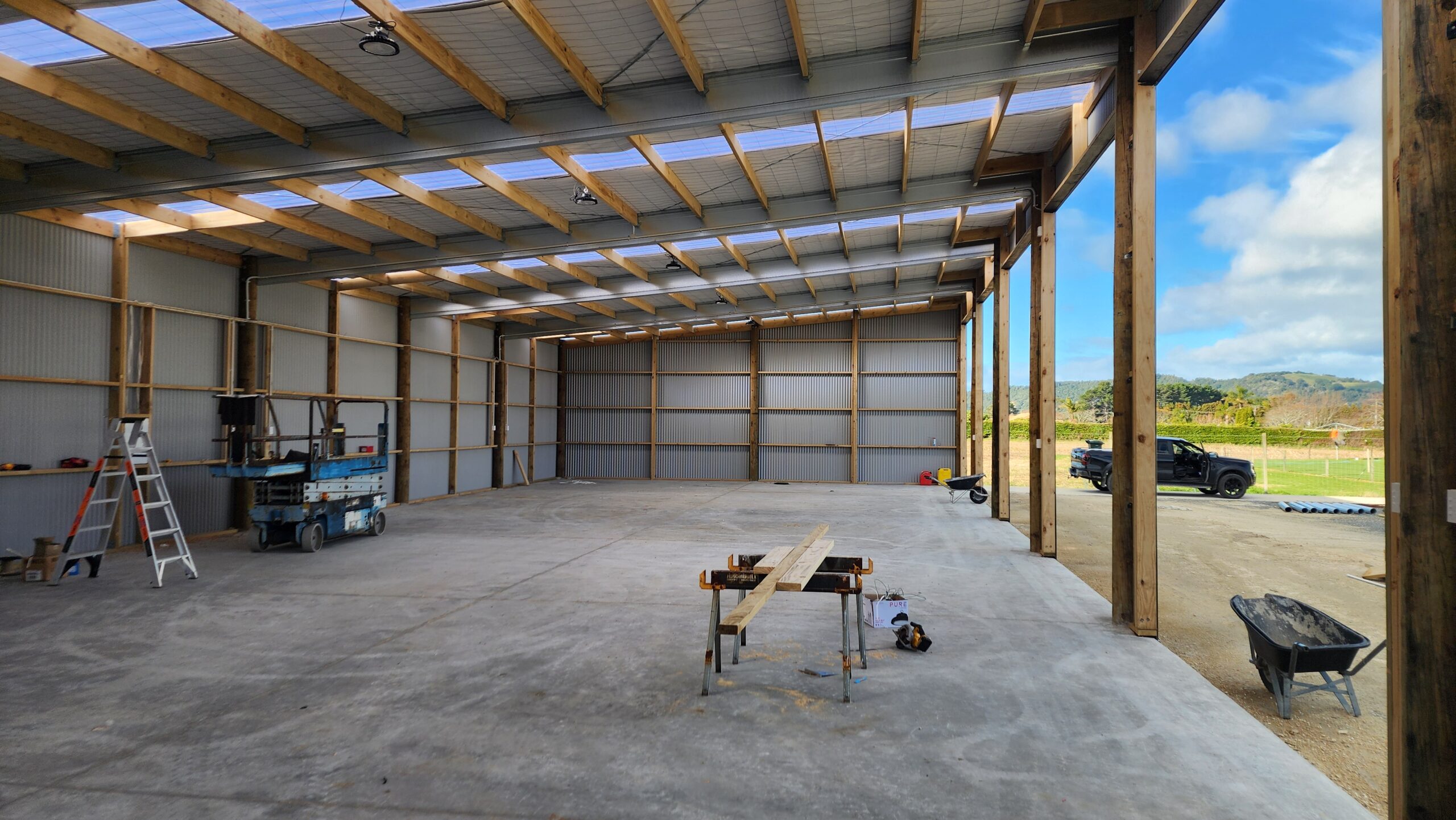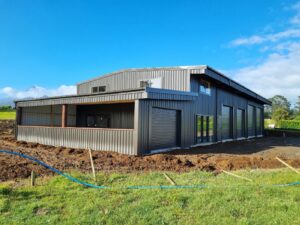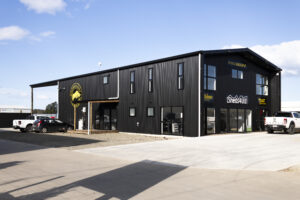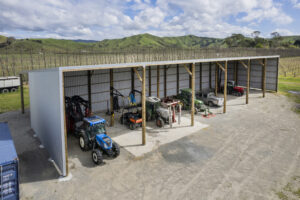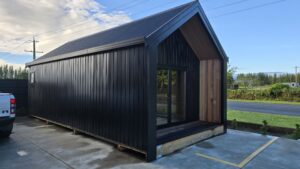If you’re thinking about building a shed, how long it’ll last is a key factor, especially if it’s on a property that’s going to stay in the family or you’re adding value to a business you might want to sell one day.
While sheds come in several materials, the two most popular in NZ are timber and rolled steel. Let’s take a look at the lifespan of each type of shed, and discover why one lasts longer than the other.

Timber Sheds
Timber sheds are known and admired for their longevity. Most timber sheds in New Zealand use treated pine and can outlast sheds built from rolled steel.
Timber sheds easily last anywhere from 30 to 50 years; sometimes even longer. You see, high-quality, treated timber sheds made from pressure-treated pine (which is what we supply) can have amazing lifespans, because modern methods treat the poles in a highly pressurised environment, so the chemicals get deep into the timber. This significantly reduces risks and effects of decay, so the timber remains structurally sound for decades.
Thanks to this, timber pole sheds typically come with an astonishing 50-year building consent – the longest building consent you can get! This extended consent is a testament to the durability of sheds built this way.
While the warranties on individual building materials vary, a 50 year building consent means that any council expects the structure to remain sound for that long. Impressive!

Rolled Steel Sheds
Rolled steel sheds are constructed by pressing tin that’s roughly 2mm thick into shape. These structures rely on their shape for strength, rather than the thickness of the steel. Rust protection is thin – usually only a light galvanised coating; hot dip galvanising is universally thought of as the best rust protection method but it just isn’t an option for rolled steel because the 2mm thick tin won’t withstand the heat of the galvanising baths and will warp or even melt.
A rolled steel shed will usually last 15 to 30 years depending on where it’s built. The thin steel is particularly susceptible to rust and most rolled steel systems use thousands of tec screws for construction. Each of these screws heat the steel up and strips away the what little rust protection is in place, so every connection is held by raw, unprotected 2mm thick tin. This can quickly compromise the structural integrity of the shed.

Most rolled steel sheds come with a 25-year building consent, a much shorter period in comparison to timber sheds due to the different wear and tear characteristics of rolled steel, particularly with the risks of rust as discussed earlier.
And because rolled steel sheds rely on the shape of the structure for strength, rather than the thickness of the steel, any knock can really have a bad outcome. An easily dented piece of 2mm thick tin changes shape. This means that the strength of the structure is threatened and can lead to structural damage which are is pricey to repair, if indeed it’s repairable at all.
Let’s talk price now, because it’s often a deciding factor: prices vary enormously between your choice of material, the design and your choice of supplier, and rolled steel is often cheaper than timber by as much as 10-20%. That margin closes considerably though when full building costs are added in.
That’s because most timber pole sheds are faster to construct and more importantly have much more basic foundation requirements. Steel sheds demand a structural floor with an engineer’s sign because the shed is reliant on the slab for strength.
This means that thicker perimeters and often complicated reinforcing designs are needed. A pole shed, on the other hand, doesn’t use the slab for strength, so it’s considered non-structural and is classed as an accessory. Perimeter thickenings are not usually required as the timber poles are simply concreted into a hole in the ground; in fact some pole sheds don’t even require a slab at all.

Making the choice between a timber or rolled steel sheds should take into account the lifespan of the shed because that indicates the long-term value. If you’re building a shed on a property you’re improving to sell on in q few years, rolled steel may be the better choice.
But if you’re building with an eye on the long-term, it’s hard to beat a pole shed for value. It might cost a bit more first up, but they last at least twice as long giving a much better return on your investment, meaning a much lower cost of ownership.
At Sheds4U we use timber poles and framing and then a hot dip galvanised structural steel clearspan. This steel is typically 8-10mm thick and all the connections are bolted together, creating a shed that’s really strong and backed up with a 50-year building consent.
If you’ve got a shed in mind, get in touch with us – and let’s get your journey started. You can read more about how happy our customers are with their sheds and our service here.
